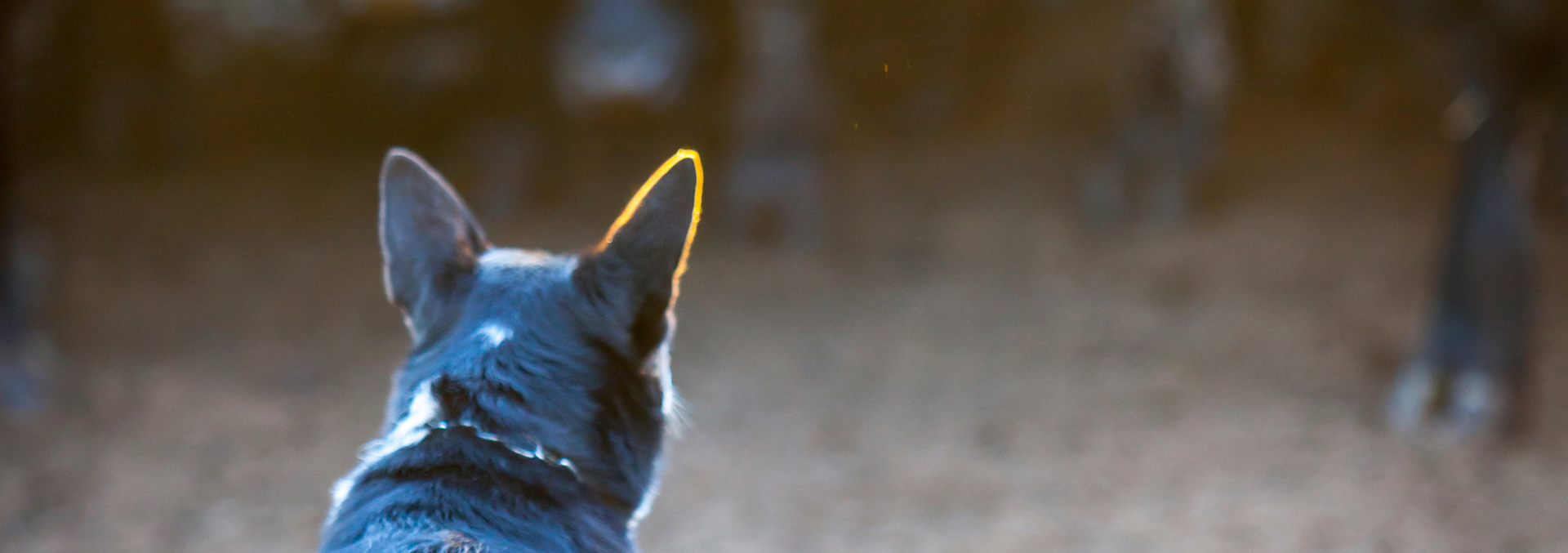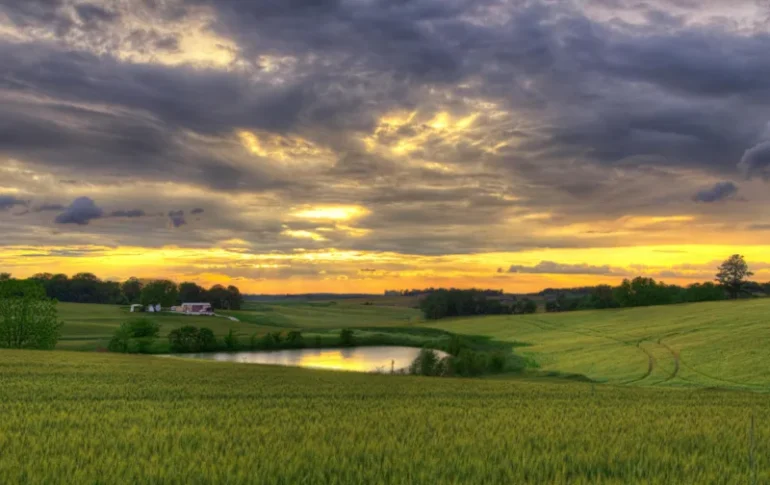Dogs of Ranchlands
By Tess Rafferty, author at the Ranchlands Review
The deep navy umbrella of a four am Colorado prairie sky hangs overhead. Birds are still slumbering, awaiting the arrival of dawn before beginning morning discussions. There are few sounds to be heard save the creaking of leather, the clank of cinches, the shifting of hooves as the tacking up process begins. The human portion of the crew are near wordless, still slightly bleary eyed and mentally taking stock of the day ahead of them. The group is soon headed out across the vast expanse, and the prairie begins to stir. The sun rips a magenta gash across the early morning sky and the song of meadowlarks trill across the pasture. All this commotion is kept in time by the rhythmic 1,2,-1,2 of the team trotting out to reach cattle and begin the day’s move. And there, amid the thrum of the waking prairie and in between the footfall of hooves, is another sound. More quickly paced but keeping time, all the while eagerly propelling toward the job ahead. Four legs, two ears, and a tail that wags rather than swishes – the beloved and indispensable ranch dog.
Part co-workers, part companionship, the relationship between man and dog stretches back tens of thousands of years. A relationship so deeply woven into our collective history it’s hard to imagine life without these particular four legged companions. In this instance, the working dog represents a unique and irreplaceable asset to the rancher’s team. Able to reach places a horse and rider could not on their own and with a specialized skill set that only they can execute. And, while it’s safe to say that each rider develops a deep bond with their horses, equines generally tend not to fit as well inside the living room, giving dogs the unique perspective of being with us during virtually all hours of the day.
The ranch dog’s history meanders and overlaps throughout the centuries. Essentially each breed of cattle dog can be traced back to European roots such as Scotland, England, and Basque Country before their eventual dispersal throughout the globe as shepherds and ranchers relocated to new areas and livestock management presented new terrain. Throughout that time, new breeds have emerged; often created with specific qualities designed for optimal livestock management. But while geography, climate, names, and pedigrees may change, one thing remains constant: the steadfast companionship and undying loyalty of a rancher’s best friend.





